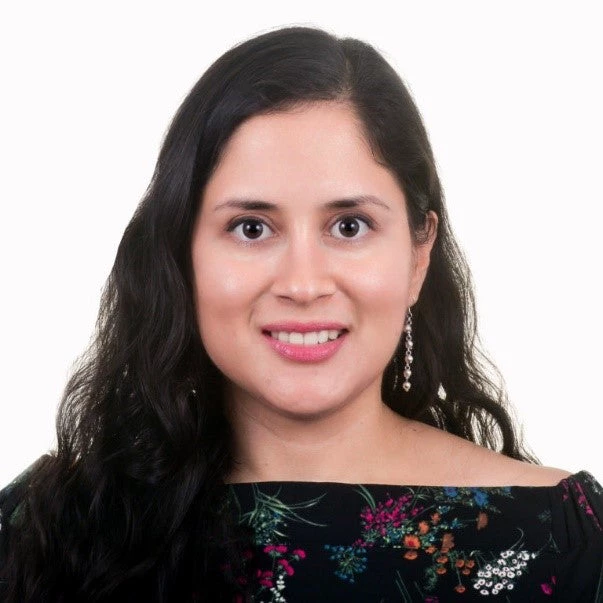 Una niña africana usa una mascarilla hecha en casa como protección y da su aprobación levantando el pulgar derecho, con la escuela en segundo plano (crédito de la fotografía: Yaw Niel)
Una niña africana usa una mascarilla hecha en casa como protección y da su aprobación levantando el pulgar derecho, con la escuela en segundo plano (crédito de la fotografía: Yaw Niel)
The COVID-19 crisis and the ensuing economic crisis shook education systems to their core and forced urgent national and international responses to ensure continuity of learning. At its height, over 1.6 billion students all over the world had their learning disrupted, exacerbating the pre-existing global learning crisis and thus creating a crisis within a crisis. And with more than a complete year of schooling lost in many parts of the world, learning poverty —the share of 10-year-olds who cannot read a basic text— could rise up to 70 percent. As schools re-open, some countries are still using hybrid or blended learning strategies, and the challenge to recover lost learning must be top priority. The need to ensure that education systems implement coherent national learning recovery programs and reforms to emerge from the pandemic resilient, more equitable, and effective so that we can accelerate learning is more important now than ever.
Continuity and Acceleration of Learning
With financial support from the Global Partnership for Education (GPE) and in partnership with UNESCO and UNICEF, the World Bank’s Education Global Practice developed the Continuous and Accelerated Learning (CAL) program. Conceived early in the pandemic, its aim has been to develop and pilot global public goods that could be deployed at scale to enable education systems to continue delivering learning specially to disadvantaged groups, and to accelerate the recovery of lost learning as schools re-opened. As part of the program, the Bank education team has focused on addressing five challenges:
- How to deliver remote learning effectively: Our EdTech team developed, in collaboration with UNICEF, a Toolkit to support policymakers and researchers in the planning and medium-to-long-term design of multi-faceted remote/hybrid learning strategies in low-resource environments.
- How to make sure that students are actually learning remotely: The Learning Assessment Platform (LeAP) team has developed and piloted approaches to real-time Remote Formative Assessment Solutions using basic (mobile) phones.
- How to reach those with no or limited technology (often vulnerable and disadvantaged children): The Read@Home program aims to deliver reading, learning and play materials to hard-to-reach homes, as quickly and efficiently as possible, and encourages parents and caregivers to support children’s learning at home.
- How to accelerate learning and address learning poverty: The work on Structured Pedagogy aims to produce a series of global products and tools that help countries to revise and improve the scope and sequence of early grade reading instruction. These tools aim to explain, in non-technical language, the science of reading, and provide examples of high-quality lesson plans.
- How to support teachers effectively with technology: Teachers in most countries were caught unprepared, untrained or poorly trained to use technology to support remote learning or deploy effective teaching strategies. Systems were largely unprepared to deliver the support they needed through existing teacher professional development programs. Through a review of the evidence and on-the-ground experiences from across the world, Technology for Teaching (T4T) provides policymakers with guidance and evidence on how to effectively utilize low-or high-tech solutions to engage, motivate, and support teachers through the use of technology.
In turn, UNESCO has developed three main regional on-line learning platforms for distance and blended learning, as well as a teacher platform for children with special needs: Imaginecole (supporting ten Francophone African countries), Imagine Learning Africa (focusing on teacher training for five Anglophone African countries), and WakaMoana (supporting teachers with content and training in the Asia and the Pacific region) while the initiative Accelerated Funding to Strengthen Global Partnership for Education’s Response to COVID-19 in Asia is also ensuring that children with disabilities continue to learn during and after major crises such as the COVID-19 pandemic.
UNESCO has also been monitoring the evidence of education responses to COVID-19 as well as lessons learned to better prepare for future emergencies. Finally, like the Bank, UNICEF has led work on learning continuity at scale that reaches the most marginalized, in particular to support foundational literacy and numeracy through global tools and resources.
What have we learned so far from the CAL program?
The CAL work is aligned with the World Bank’s strategic education policy approach and contributes to a host of country-level and global initiatives focused on recovering learning and building back better education systems around the world. From our work over the last eighteen months, we have drawn five main lessons:
- The need for tools that help ensure learning continuity and resilient education delivery is timely and pressing as demonstrated by the active engagement of 18 countries in the pilots and the strong demand for just-in-time technical assistance.
- Countries want practical, actionable guidance and context-sensitive solutions: Beyond technical assistance, countries want to know what works and how to apply it to their own contexts.
- Capacity building for the long term is necessary: There is a need for concerted and systematic capacity building efforts at all levels—at the school level for teachers and principals, and for policy makers at the subnational and national level.
- Integration with existing government programs is crucial for sustainability and scale up when piloting and implementing the tools developed.
- Global partnerships can be very powerful to deliver at scale: The pandemic has forged closer collaboration and alignment among global actors such as the World Bank, UNICEF, UNESCO and the GPE. The CAL program is an example of acting in concert to tackle complex problems.
What’s next? Looking forward
The pandemic has shown us that education systems can move fast to adapt and change, although preparation to make them more resilient is badly needed. In a world facing climate change, we can expect disruptions to learning due to natural disasters and also future pandemics. The world has learned a lot about what an education system that is resilient and responsive to these and other shocks looks like. We have also learned that in order to achieve resilience we need to deal with inequality challenges, and how to better help parents who are a critical source of support to children’s learning.
The time is now to build resilient, equitable, and effective education systems where students can learn anytime and anywhere, where teachers have the right skills and support, and where parents are engaged and supported in the learning process. This will require strong national and global partnerships between development partners, countries, non-governmental organizations, and the private sector.
The CAL program has been highly instrumental to the Bank’s support to respond to the amplified learning crisis due to COVID-19. The program has been a gateway to learn, iterate and refine approaches that can help us to be prepared for the next crisis. It has also benefitted and strengthened our technical partnership with UNESCO and UNICEF.
We will continue piloting the newly developed tools over the next few months, in collaboration with UNESCO, UNICEF and GPE, ensuring they are aligned with government priorities and country contexts, with the potential to replicating the most effective ones in other countries. This work is critical during and beyond the pandemic and will certainly yield more valuable lessons in the near future.
To learn more about the CAL program, check out our webpage with a variety of resources on the five workstreams. The work cited in this blog has benefitted from the financial support of the Global Partnership for Education (GPE).
Special thanks to Omar Arias as well as our counterparts at UNESCO and UNICEF for their inputs.
Related links







Join the Conversation